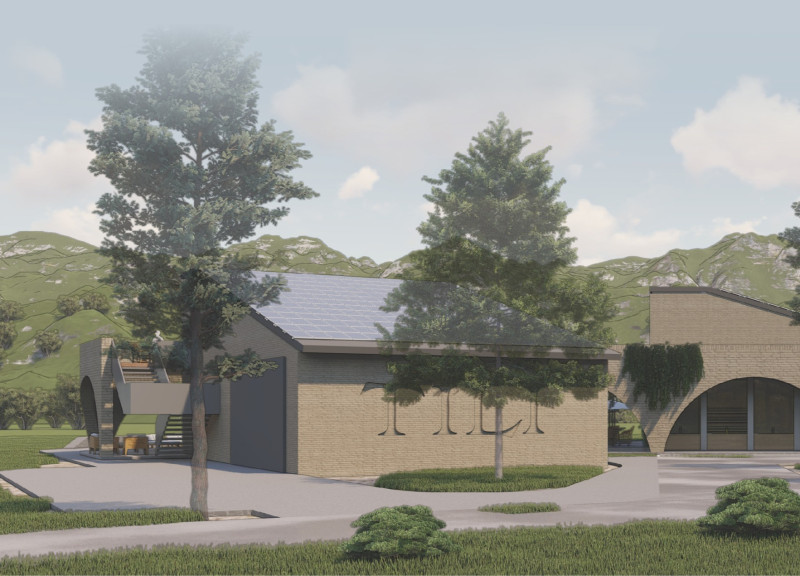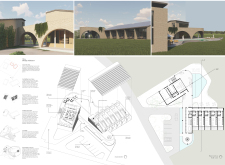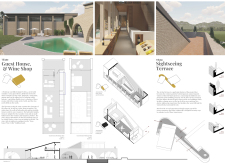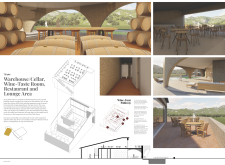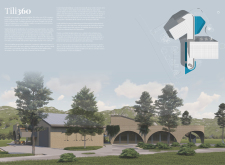5 key facts about this project
Crafted on a site that maximizes views of the vineyard, the layout promotes fluid movement between interior and exterior spaces. Key elements include arched terraces that provide shade and serve as transitional areas, while the integration of glass facades ensures natural light permeates the structures. Each building is purposefully oriented to optimize solar access and views, reinforcing the connection between architecture and landscape.
Sustainable Practices and Materiality
The project utilizes a range of materials that reinforce its commitment to sustainability. Local brick serves as the primary construction element, maintaining a connection to traditional building methods. Wood accents provide warmth and functionality, particularly in communal areas designed for visitors to relax and gather. Extensive glazing is employed to frame the picturesque surroundings, effectively blurring the boundaries between inside and outside. The use of solar panels facilitates energy efficiency, making a strong statement about the project's dedication to minimizing its ecological impact.
Unique Design Approaches
What sets the Tili360 project apart is its deliberate focus on cultural integration and community interaction. The design fosters a space where wine tourism can flourish, inviting both local residents and visitors to engage with the land through various activities. Pathways connecting different areas encourage exploration and reflection, guiding guests throughout the vineyard. Terraced elevations offer distinct vantage points, enriching the experience and promoting a deeper appreciation of the landscape.
Overall, the Tili360 project represents a successful fusion of architecture, sustainability, and local culture. By thoughtfully incorporating these elements, the project stands as a model for future developments within similar contexts. For a more detailed understanding of the architectural concept and execution, review the architectural plans, architectural sections, and architectural ideas presented alongside this analysis. Exploring these resources will provide further insights into the intentions and outcomes of the Tili360 design.


